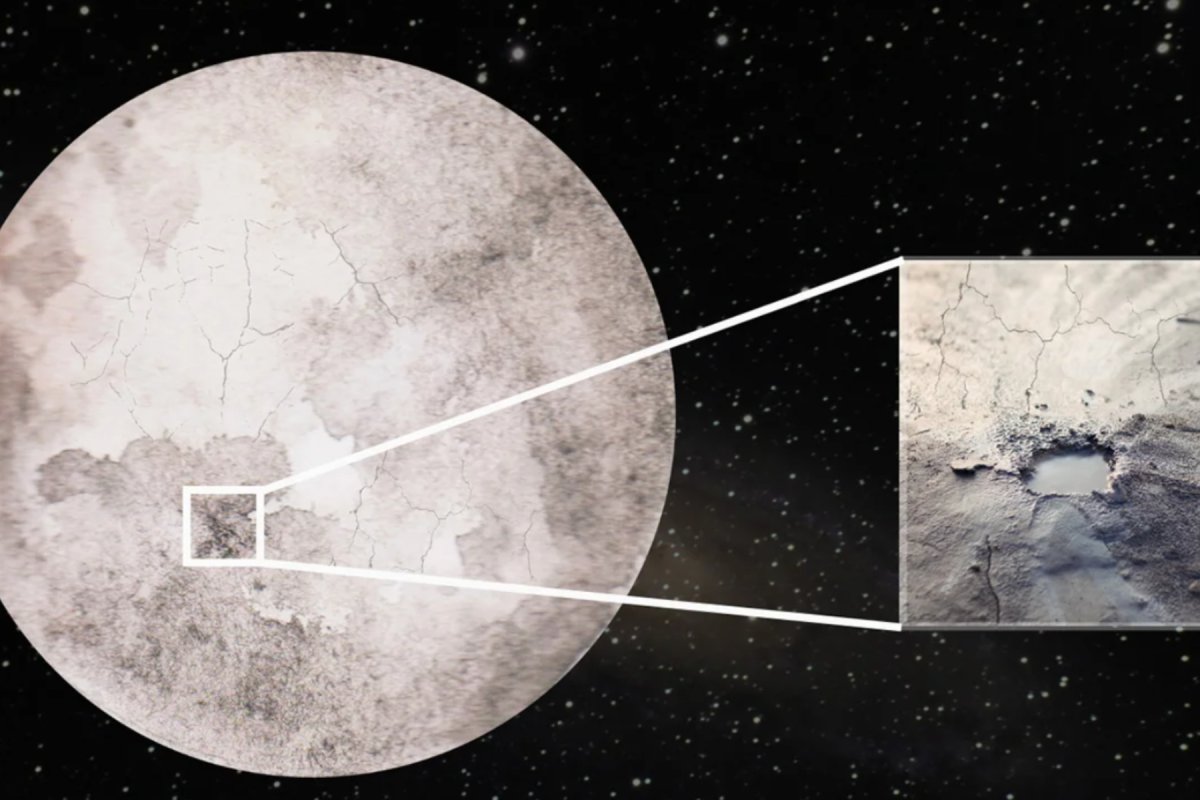The small icy worlds on the edge of our solar system may be better contenders for life than we first thought, scientists have found.
The dwarf planets of Eris and Makemake, situated in the Kuiper Belt beyond the orbit of Neptune, may have geothermal activity beneath their surfaces, according to two new papers in the journal Icarus.
These geological processes were inferred by the discovery of recent methane isotopologues or isotopes—forms of methane differing by the number of neutrons in their nucleus—on the surface of Eris and Makemake. This marked the first time that these methane isotopologues have been discovered on objects beyond Neptune.
This implies that these dwarf planets might be warmer than first thought, and therefore more capable of hosting life.

Eris and Makemake, alongside Pluto and Haumea, are dwarf planets on the edge of the solar system. Dwarf planets are defined by having enough mass for their self-gravity to pull them into a roughly spherical shape, but they differ from full planets in that they have not cleared their orbital neighborhood of other debris.
Eris is the largest dwarf planet in the solar system, larger than Pluto, and orbits at an average distance of 6,289,000,000 miles away from the sun, about 68 times further out than the Earth. Its diameter is about 1,444 miles across, making it smaller than our own moon, which is 2,160 miles across. Eris orbits the sun once every 557 years, and was named for the ancient Greek goddess of discord and strife.
Makemake is the third-largest known dwarf planet in our solar system, after Pluto and Eris, with a diameter of 888 miles across. It takes about 309 years to orbit the sun. It was discovered in 2005 by the same team that discovered Eris in the same year, and was named after the creator of humanity and god of fertility in the mythology of the Rapa Nui people of Easter Island.
The papers reveal that Eris and Makemake have traces of geologically new methane on their surfaces that could only have gotten there as a result of geothermal activity. This suggests that the dwarf planets may be host to cryovolcanism, or even the presence of a hot rocky core.
"Eris and Makemake unveil a surprising narrative of internal dynamism," co-author of both papers, Noemí Pinilla-Alonso, a research professor at the University of Central Florida's Florida Space Institute, said in a statement. "The possibility of subsurface oceans and the revelation of rare, methane isotopologues CH3D and 13CH4 on these distant worlds challenge the conventional wisdom of primordial compositions in large trans-Neptunian Objects."
"This not only redefines our understanding of these icy worlds but also emphasizes the pivotal role of endogenic forces in shaping the outer solar system bodies," Pinilla-Alonso said.
This discovery was made using data gathered by the James Webb Space Telescope, which allowed the researchers to measure the composition of the surfaces of Eris and Makemake. In particular, they measured the ratio of deuterium or heavy hydrogen to hydrogen (D/H ratio) in the methane present. As deuterium is thought to have formed in the Big Bang, the D/H ratio can reveal the origin and history of chemicals containing hydrogen.

"The moderate D/H ratio we observed with JWST belies the presence of primordial methane on an ancient surface," Christopher Glein, co-author of both papers, and a planetary scientist and geochemist at the Southwest Research Institute, said in the statement. "Primordial methane would have a much higher D/H ratio. Instead, the D/H ratio points to geochemical origins for methane produced in the deep interior."
The researchers also found evidence in the carbon isotope ratio (13C/12C) of recent resurfacing of the chemicals on the dwarf planets, further indicating geological activity. This could point to there being liquid water present deep under the surfaces of the planets.
"If Eris and Makemake hosted, or perhaps could still host warm, or even hot, geochemistry in their rocky cores, cryovolcanic processes could then deliver methane to the surfaces of the planets, perhaps in geologically recent times," Will Grundy, an astronomer at Lowell Observatory and co-author of the March 2024 issue study, said in the statement.
This therefore could make Eris and Makemake contenders for the presence of life.
"The measured D/H ratios on Eris and Makemake are much lower than the D/H ratio observed in primordial surfaces in the solar system, for example, the comet 67P/Churyumov-Gerasimenko, recently visited by a spacecraft," Pinilla-Alonso said.
"The distinct isotopic ratios suggest that the hydrogen atoms in the methane on Eris and Makemake likely originated from water, indicating geochemical processes in their warm or even hot deep interiors," she said. "These findings, with implications for habitability considerations, highlight JWST's pivotal role."
Do you have a tip on a science story that Newsweek should be covering? Do you have a question about dwarf planets? Let us know via science@newsweek.com.
Uncommon Knowledge
Newsweek is committed to challenging conventional wisdom and finding connections in the search for common ground.
Newsweek is committed to challenging conventional wisdom and finding connections in the search for common ground.
https://news.google.com/rss/articles/CBMiUGh0dHBzOi8vd3d3Lm5ld3N3ZWVrLmNvbS9kd2FyZi1wbGFuZXRzLWVyaXMtbWFrZW1ha2UtZ2VvdGhlcm1hbC1hY3Rpdml0eS0xODcxNDg40gEA?oc=5
2024-02-20 12:19:43Z
CBMiUGh0dHBzOi8vd3d3Lm5ld3N3ZWVrLmNvbS9kd2FyZi1wbGFuZXRzLWVyaXMtbWFrZW1ha2UtZ2VvdGhlcm1hbC1hY3Rpdml0eS0xODcxNDg40gEA
Bagikan Berita Ini















0 Response to "Worlds at the Far Reaches of the Solar System Could Support Life - Newsweek"
Post a Comment